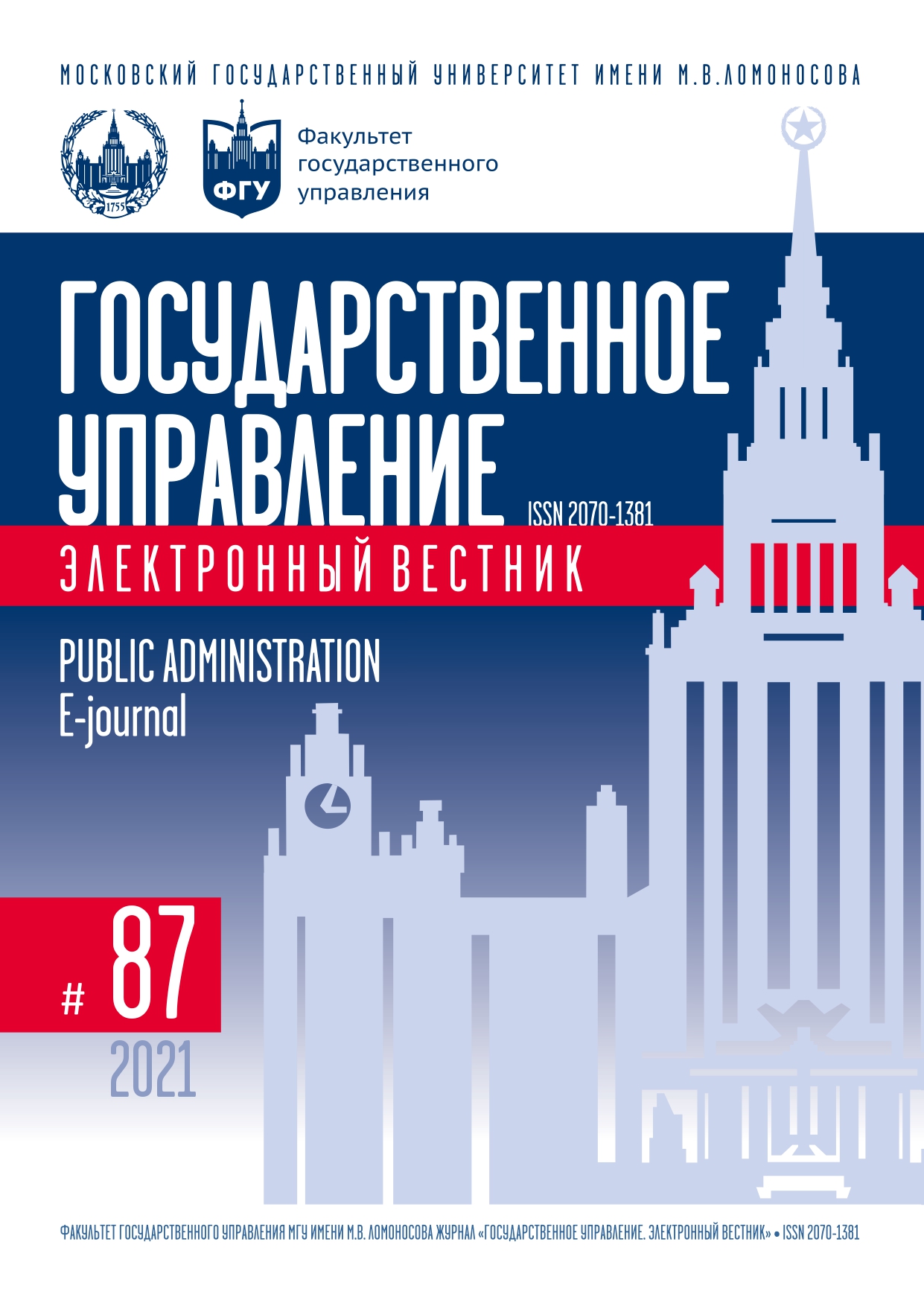High-Tech Sectors in EAEU: The Regional Governance’ Problems and Opportunities
Keywords:
High-tech sectors, Eurasian Economic Union, mission-oriented policy, traditional economic policy, development instituteAbstract
The article’s relevance is defined by the necessity to solve the contradiction in the Eurasian Economic Union (EAEU) between the requirements of its high-tech sectors immediate development and the low efficiency of the policy to support them. The analysis of the causes of such political difficulties and the opportunities to overcome them based on foreign experience of the alternative economic policy model’ elaboration and execution constitutes the aim of the article. The aim comprehends the respective research methods, i.e. historical and economic, content-analysis, comparative, scientific in general. Their application reveals the deficiencies of the EAEU’ policy, i.e. the inherent extremely complicated decision-taking mechanisms, the limited number of participants, the vertical type of governance, etc. The reference to the alternative model of the mission oriented economic policy facilitates to suspend them and elevate the political efforts efficiency, analyzed such model in prism of its applicability to Eurasian realities and the subjects capable to execute it. As a result, it is concluded that it is possible and reasonable to direct the mission-oriented policy to develop the EAEU’ high-tech sectors and there are advantages of such model against the traditional one. Still, the research lacunas, i.e. the sufficiency of the terms identified to execute the mission oriented policy, their measurement and assessment, the possibilities and the character of the governance actions if the terms and their subjects are unsaturated, require its further development. Nevertheless, the latter doesn’t reject the rationality to develop and execute the mission-oriented policy in the EAEU’ sectors. From one side, the respective efforts allow eliminating the lacunas in the theory. From the other, contribute to the foundations for the efficient development and consolidation of the regional high-tech sectors.
References
Currie-Alder B. The State of Development Studies: Origins, Evolution and Prospects // Canadian Journal Development Studies (Revue canadienne d’études du développement). 2016. Vol. 37. Is. 1. P. 5–26. DOI: https://doi.org/10.1080/02255189.2016.1135788.
Entin M., Voynikov V. Institutional and Legal Development of EAEU and EU in Comparative Perspective // Russian Law Journal. 2019. Vol. 7. Is. 3. P. 155–168. DOI: https://doi.org/10.17589/2309-8678-2019-7-3-155-168.
Fagerberg J. Mobilizing Innovation for Sustainability Transitions: A Comment on Transformative Innovation Policy // Research Policy. 2018. Vol. 47. P. 1568–1576. DOI: https://doi.org/10.1016/j.respol.2018.08.012.
Golovko A., Sahin H. Analysis of International Trade Integration of Eurasian Countries: Gravity Model Approach // Eurasian Economic Review. 2021. DOI: https://doi.org/10.1007/s40822-021-00168-3.
Henderson D. Institutional Work in the Maintenance of Regional Innovation Policy Instruments: Evidence from Wales // Regional Studies. 2020. Vol. 54. P. 429–439. DOI: https://doi.org/10.1080/00343404.2019.1634251.
Kattel R., Mazzucato M. Mission-Oriented Innovation Policy and Dynamic Capabilities in the Public Sector // Industrial and Corporate Change. 2018. Vol. 27. P. 787–801. DOI: https://doi.org/10.1093/icc/dty032.
Kroll H. How to Evaluate Innovation Strategies with a Transformative Ambition? A Proposal for a Structured, Process-Based Approach // Science and Public Policy. 2019. Vol. 46. Is. 5. P. 635–647. DOI: https://doi.org/10.1093/scipol/scz016.
Magro E., Wilson J. Policy-Mix Evaluation: Governance Challenges from New Place-Based Innovation Policies // Research Policy. 2019. Vol. 48. Is. 10. DOI: 10.1016/j.respol.2018.06.010.
Mazzucato M. From Market Fixing to Market-Creating: A New Framework for Innovation Policy // Industry and Innovation. 2016. Vol. 23. Is. 2. P. 140–156. DOI: https://doi.org/10.1080/13662716.2016.1146124.
Mazzucato M., Semieniuk G. Public Financing of Innovation: New Questions // Oxford Review of Economic Policy. 2017. Vol. 33. Is. 1. P. 24–48. DOI: https://doi.org/10.1093/oxrep/grw036.
Mukhametdinov M. The Eurasian Economic Union and Integration Theory. Cham: Palgrave Macmillan, 2020. DOI: 10.1007/978-3-030-34288-3.
Sainsbury D. Toward A Dynamic Capability Theory of Economic Growth // Industrial and Corporate Change. 2020. Vol. 29. P. 1047–1065. DOI: https://doi.org/10.1093/icc/dtz054.
Sanjeev V., Suresh Babu M. Global Production Sharing and Trade Effects: An Analysis of Eurasian Economic Union // Eurasian Economic Review. 2021. DOI: https://doi.org/10.1007/s40822-021-00179-0.
The Economic Dimension of Eurasian Integration / ed. by N. Piskulova. Cham: Palgrave Macmillan, 2021. DOI: 10.1007/978-3-030-59886-0.
The Triple Challenge for Europe: Economic Development, Climate Change, and Governance / ed. by J. Fagerberg, S. Laestadius, B. Martin. Oxford: Oxford University Press, 2016. DOI: 10.1093/acprof:oso/9780198747413.001.0001.
Vinokurov E. Introduction to the Eurasian Economic Union. Cham: Palgrave Macmillan, 2018. DOI: 10.1007/978-3-319-92825-8.
Wilden R., Devinney T., Dowling G. The Architecture of Dynamic Capability Research: Identifying the Building Blocks of a Configurational Approach // Academy of Management Annals. 2016. Vol. 10. Is. 1. P. 997–1076. DOI: https://doi.org/10.5465/19416520.2016.1161966.
Zapata-Cantu L., González F. Challenges for Innovation and Sustainable Development in Latin America: The Significance of Institutions and Human Capital // Sustainability. 2021. Vol. 13. DOI: https://doi.org/10.3390/su13074077.

